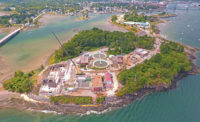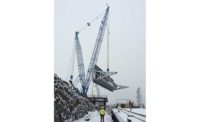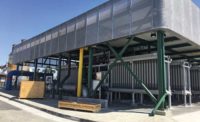Best Projects
Best WATER/ENVIRONMENT: Replacement of the Existing Water Siphons Between Brooklyn and Staten Island

Photo courtesy of WSP/LIRO Joint Venture
Replacement of the Existing Water Siphons Between Brooklyn and Staten Island, N.Y.
Staten Island, N.Y.
BEST PROJECT
OWNER: New York City Economic Development Corp.
LEAD DESIGN FIRM: CDM Smith
GENERAL CONTRACTOR: OHLA USA Inc. and Judlau Contracting Inc.
CONSTRUCTION MANAGER: WSP/LiRo, a Joint Venture
The decade long project to replace water siphons serving residents of Staten Island in New York City produced multiple challenges for the construction team.
The planned deepening of the Port of New York’s Anchorage Channel called for replacing two siphons with a single line within a 9,500-ft-long, 12.5-ft-dia tunnel, which was constructed using an advanced earth pressure balance tunnel-boring machine—a first for New York City, says the team.
Related link: ENR New York Best Projects 2021
Tunneling was only 17% complete in late October 2012 when Superstorm Sandy inundated the jobsite, severely damaging the machine. It was relaunched after 18 months of repairs and refurbishments. As the route took the machine beneath major highways, rail lines and other above-ground infrastructure, the project team implemented sophisticated plans to monitor for potential settlement and other effects.

Photo courtesy of WSP/LIRO Joint Venture
Safety was an ongoing concern, particularly given the large amount of work being performed deep underground. At the receiving shaft in Brooklyn, N.Y., divers were enlisted in some aspects of construction. The process required rebar to first be installed approximately 140 ft underwater, followed by the placement of concrete poured by divers. Special oversight and precautions were needed, including the availability of a backup diver and a portable compression/decompression chamber at the surface.

Photo courtesy of WSP/LIRO Joint Venture
Oxygen decompression facilities were also used for workers tasked with the weekslong work of replacing mechanisms on the machine’s cutter head. It was also equipped with mine arc refuge chambers to supply fresh air to workers in case they were unable to access the launch shaft in an emergency.

Photo courtesy of WSP/LIRO Joint Venture
Although subsequent installation of the 6-ft-dia water transmission piping was relatively routine, Sandy also required redesigning the project’s only above-ground structure—a chlorination facility located on Staten Island that was elevated and adapted to include additional resilience features to ensure reliable operation during major storms in the future.
Completed in January 2021, the new siphon serves as both a landmark infrastructure project and a source of valuable information that will help guide future underground construction efforts, the team says.





